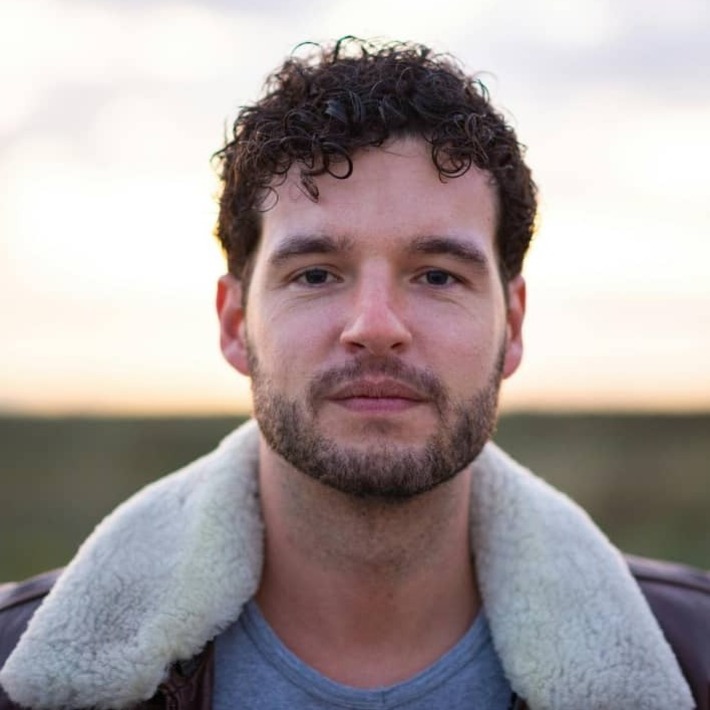Travel Writing For Beginners - How To Capture Your Adventures In Words
Learn how to start travel writing with expert tips and creative exercises. Capture your adventures in words and share your stories like a pro. Perfect for beginners.
Author:Liam JonesReviewer:Maya ReyesMar 11, 2025225 Shares37.5K Views

Imagine standing on a quiet hilltop, watching the sun dip below the horizon, painting the sky in shades of gold and crimson. The air is thick with the scent of earth after the rain, and in the distance, you hear the soft hum of a foreign language. How do you put that feeling into words?
Travelwriting isn’t just about listing places you’ve been; it’s about taking readers on the journey with you. It’s about making them feel the wind in their hair, taste the spice of a street vendor’s dish, and hear the chaotic symphony of a bustling market.
If you’ve ever struggled to translate your travel experiences into writing that captivates, this guide will help you find your voice and craft stories that truly come alive.
What Makes Travel Writing Unique?
Travel writing is more than just a diary of your trips. It’s a blend of storytelling, cultural exploration, and personal reflection. Unlike other forms of writing, it requires you to be both an observer and a participant. You’re not just recounting events; you’re sharing the emotions, sights, sounds, and lessons that make each journey unforgettable.
What sets travel writing apart is its ability to connect people. A well-written travel story can transport readers to places they’ve never been, evoke emotions they’ve never felt, and inspire them to see the world through fresh eyes. It’s a powerful way to bridge cultures, spark curiosity, and preserve memories.
Types Of Travel Writing
There’s no single way to write about travel. Some writers focus on personal narratives, weaving in emotions and reflections. Others create detailed guides filled with practical advice. Here are some common approaches:
- Narrative Travel Writing:A storytelling style that makes readers feel like they are part of the journey.
- Destination Guides:Practical tips and recommendations for travelers.
- Culntural and Food Writing:A deep connection to traditions, cuisine, and local experiences.
- Adventure and Experiential Writing:Capturing adrenaline-fueled moments like hiking through jungles or diving in the deep sea.
Essential Elements Of Great Travel Writing
1. Use Vivid Descriptions - Show, Don’t Just Tell
A common mistake in travel writing is stating facts instead of painting a picture. Your goal is to make the reader feel as if they are standing right beside you. Instead of saying:
"The beach was beautiful."
Try something that engages the senses:
"The waves curled like blue silk, washing over the sun-warmed sand, leaving behind delicate seashells like forgotten jewels."
How To Improve Your Descriptions
- Use all five senses; sight, sound, smell, taste, and touch.
- Focus on small but powerful details: the way coffee steam curls in the morning air, the uneven texture of ancient cobblestones beneath your feet, or the sharp sweetness of fresh pineapple at a market stall. An AI art generatorcan even help you visualize these moments more clearly as you shape your scene.
- Avoid overused words like “amazing” or “breathtaking.” Instead, be specific about what makes the scene special.
2. Turn Your Experiences Into A Story
People don’t just want to read about where you went, they want to feel what you felt. Instead of writing a list of places visited, shape your experiences into a story.
Ask yourself:
What was unexpected or emotional about this experience? Did something go wrong or surprise you? How did this journey change your perspective?
Example: Instead of saying:
"I visited the Grand Bazaar in Istanbul."
Turn it into a story:
"The scent of cinnamon and roasted nuts drifted through the air as I wandered the labyrinth of the Grand Bazaar. A shopkeeper waved me over, his smile warm and knowing. 'Try this,' he insisted, handing me a delicate glass of apple tea. In that moment, the chaos of the market faded, replaced by a quiet connection between two strangers."
Even the smallest moment can become a memorable part of your travel story.
3. Write An Engaging Opening And A Memorable Closing
The first and last sentences of your travel story are the most powerful. A strong opening grabs attention, while a well-crafted closing leaves a lasting impression.
How To Start Strong
Begin with a moment of action, emotion, or curiosity. Avoid dull introductions like:
"I arrived in Bangkok and checked into my hotel."
Instead, create intrigue:
The heat hit me like a wall as I stepped into the neon-lit streets of Bangkok. Somewhere nearby, the scent of lemongrass and grilled meat curled through the air, and I knew I was about to taste something unforgettable."
How To End With Impact
Don’t just stop your story abruptly. Reflect on the experience, share a final thought, or return to a powerful moment from earlier in the piece.
"As I left the little café in Rome, I turned back for one last look. The barista smiled, raising his espresso cup in a silent farewell. In that moment, I realized, Some places don’t just leave memories they leave pieces of themselves with you."
4. Develop Your Unique Writing Style
Your voice is what makes your writing different from everyone else’s. Some writers are witty and humorous, others are thoughtful and poetic, and some are detailed and informative.
How To Find Your Writing Voice:
- Write as if you’re speaking to a close friend.
- Don’t try to sound like other writers; be yourself.
- Notice which words and phrases feel natural to you.
- Experiment with different tones until you find what feels right.
Exercise:Write a paragraph about a recent trip without editing yourself. Then, read it aloud. Does it sound like you? If not, adjust it until it does.
5. Pay Attention To Small, Meaningful Details
The best travel stories focus on more than just landmarks. They highlight the little moments the ones that truly make a place come alive.
What To Look For
- How does the air feel at sunrise in a new city?
- What unexpected conversations did you have?
- How does a traditional dish taste compared to what you expected?
- What sounds fill the streets at night?
Example:Instead of saying:
"The café was nice."
Be specific:
"The café’s tiny wooden tables were covered with mismatched lace cloths. A sleepy cat curled up by the window as the scent of freshly baked bread filled the air."
Writing Exercise:Spend 10 minutes describing a single scene using all five senses.
6. Create A Narrative That Flows Smoothly
A good travel story has structure. It isn’t just a collection of random thoughts; it has a beginning, middle, and end.
How To Structure Your Story:
- Start with a hook:A striking moment, a question, or a vivid description.
- Build the journey:Show what happened, who you met, and what you experienced.
- End with reflection:What did you take away from this experience?
Example: Instead of:
"I went to Paris. I saw the Eiffel Tower. I ate croissants."
Try:
I arrived in Paris on a rainy evening, the Eiffel Tower shimmering through the mist like a beacon of hope. That night, in a tiny Montmartre café, I bit into a warm, buttery croissant, and for the first time, I truly understood the magic of the city."
7. Edit And Refine Your Writing
The first draft is never perfect. The best travel writing is polished and precise. Refining your work takes time, but the right tools can help. Improve your writing style and clarity by using a paraphraserto refine your sentences and paragraphs. This ensures your ideas flow smoothly and your storytelling remains engaging.
Editing Tips:
- Read your story out loud; if a sentence feels awkward, rework it.
- Cut out unnecessary words; be concise and impactful.
- Use strong, active verbs instead of weak, passive ones.
- Check for clichés and replace them with original descriptions.
Quick Fix:Instead of "The view was stunning,"describe what makes it stunning: "The sun dipped below the horizon, setting the sky ablaze with orange and violet hues."
8. Read And Learn From The Best Travel Writers
One of the best ways to improve is to read great travel writing. Writers like Pico Iyer, Bill Bryson, and Elizabeth Gilbert are masters at making places come alive on the page.
Recommended Reading:
- The Art of Travel by Alain de Botton:A deep and thoughtful look at why we travel.
- A Walk in the Woods by Bill Bryson:A humorous and insightful journey along the Appalachian Trail.
- Eat, Pray, Love by Elizabeth Gilbert:A personal and emotional journey through three different cultures.
Take notes on how these writers describe places, people, and experiences.
9. Write Consistently To Improve
Like any skill, travel writing gets better with practice. Set aside time to write every day, even if it’s just a few sentences.
Challenge:Write a 100-word travel story about your last trip. Focus on making every word count.
Creative Exercises To Hone Your Travel Writing Skills
1. Capture A Place In Just 50 Words
Challenge yourself to describe a location using only 50 words. This exercise forces you to focus on the most essential and impactful details, stripping away unnecessary descriptions.
Imagine you have a limited word count to transport someone to a place what colors, sounds, and textures stand out the most? Instead of writing, "The mountain was breathtaking," describe how "mist wove through jagged peaks like whispered secrets, while the scent of pine and damp earth clung to the crisp morning air."
2. Write A Postcard To A Friend
Picture yourself sending a postcard to someone who has never been to the place you're describing. How would you bring it to life in just a few sentences? A postcard requires brevity, yet it should still create a vivid mental image.
Instead of a generic note saying, "Having a great time in Venice!" try: "This morning, I sipped a strong espresso by the Grand Canal, watching gondoliers weave through the jade-green water. The scent of freshly baked cornetti filled the air, and the bells of San Marco chimed in the distance. Wish you were here!"
3. Recreate A Meaningful Conversation
Dialogue adds authenticity and depth to travel writing. Think back to a memorable conversation you had with a local or fellow traveler. How did their tone, expressions, or choice of words reflect their culture or emotions? Rather than simply summarizing, bring the conversation to life.
For instance, instead of saying, "A shopkeeper in Marrakech told me about his family's spice business," write:
"You like saffron?" the old man asked, lifting a small tin to my nose. I inhaled deeply earthy, sweet, slightly metallic. "It comes from my cousin’s farm in the Atlas Mountains," he said with pride. "A thousand flowers for just a few strands."
By capturing the rhythm and texture of real conversations, your stories will feel more immersive and personal.
4. Describe A Place Using Only One Sense
Travel writing typically engages all five senses, but what happens when you limit yourself to just one? Pick a place you’ve visited and describe it using only sound, smell, taste, touch, or sight. This forces you to dig deeper into details you might otherwise overlook.
For example, focusing only on sound:"Waves thud against the wooden hull of a fishing boat, the creak of old ropes stretching in protest. Seagulls shriek overhead, their cries swallowed by the wind. Laughter spills from a nearby café, where espresso cups clink against saucers, punctuated by bursts of rapid, melodic Italian."
By isolating one sense at a time, you sharpen your ability to notice and convey specific details.
5. Rewrite A Story From A New Perspective
A well-known travel experience can take on an entirely new meaning when told from a fresh point of view. Instead of narrating a story from your own perspective, try writing it from the viewpoint of a local, an animal, or even an inanimate object. How does a city look through the eyes of a street performer? What would a centuries-old castle say if it could tell its own story?
For instance, imagine writing from the perspective of a café table in Paris:"For years, I’ve stood here, absorbing whispered secrets and hurried confessions. Lovers trace circles on my surface with their fingertips, waiting for their espressos to cool. Artists rest sketchbooks against me, capturing the city in hurried strokes. I have seen hearts mend and break over glasses of Bordeaux."
By shifting perspectives, you develop a more layered and imaginative approach to storytelling, making your travel writing stand out.
How To Find Your Unique Travel Writing Style
Every writer has a unique voice, but finding yours takes time. Instead of trying to imitate others, focus on what makes your perspective different.
- What excites you about traveling?
- Do you notice small, poetic details, or do you love analyzing the big picture?
- Are you drawn to human connections, food, landscapes, or history?
Read widely, but don’t be afraid to experiment. Your writing style will evolve as you embrace your authentic voice.
Essential Tools And Resources For Travel Writers
1. Writing Apps To Enhance Your Craft
Strong travel writing requires clarity, fluidity, and precision. Editing tools like Grammarly help refine grammar and punctuation, while Hemingway Editor improves readability by highlighting complex sentences and passive voice. These tools don’t replace careful self-editing, but they can polish your work before publication.
In today’s digital world, AI-generated content is everywhere. Since it is so easy to use AI to generate articles these days, it is important to check your articles to confirm they were not flagged by an AI checker. Use a ChatGPT detectorto make sure that your article is original. This extra step ensures that your work remains authentic and truly reflects your voice.
2. Online Courses For Travel Writers
To sharpen your storytelling and master the nuances of travel writing, consider enrolling in an online course. Platforms like MasterClass offer lessons from renowned writers, while Udemy provides budget-friendly courses on travel blogging, storytelling, and publishing. Whether you’re a beginner or looking to refine your craft, structured learning can help elevate your writing.
3. Publishing Your Work
Establishing an audience is key to growing as a travel writer. Creating a personal blog on platforms like WordPress allows you to develop your voice and build a portfolio. If you're looking for professional recognition, submit your work to respected travel publications such as Wanderlust, Afar, National Geographic Traveler, or Condé Nast Traveler. Many travel magazines accept freelance submissions, offering opportunities to get published and reach a wider audience.
FAQs
What Are Common Mistakes Beginners Make In Travel Writing?
Overloading with details, lacking a clear narrative, and neglecting to edit. Focus on storytelling and precision.
Can I Make Money From Travel Writing?
Yes, through blogging, freelance writing, or publishing in magazines. Building an audience and pitching to publications are key steps.
What Are The Best Platforms To Publish Travel Writing?
You can start with a personal blog, contribute to travel magazines, or post on platforms like Medium. Social media is also a great place to build an audience.
Final Thoughts
Travel writing is more than a skill it’s a way of seeing the world. It teaches you to notice the details, embrace the unexpected, and find meaning in every journey. Whether you’re writing for yourself or an audience, your stories have the power to inspire, connect, and preserve the magic of travel.
So, grab a notebook, open your laptop, or even jot down a few lines on your phone. Start small, but start today. Your adventures are waiting to be written.

Liam Jones
Author
Liam Jones has made it his mission to prove that adventure doesn’t need a hefty budget. Having traveled to over 40 countries, he specializes in finding affordable ways to experience the world, from the best street food in Bangkok to hidden gems in Lisbon.
Liam’s travel tips have reached thousands of readers, empowering them to see the world on a shoestring budget without sacrificing quality. With a deep passion for local cultures, he continues to share his travel hacks, ensuring adventure remains accessible to all.

Maya Reyes
Reviewer
Maya Reyes’s wanderlust was sparked in the temples of Luang Prabang, where the scent of lemongrass and the chants of monks revealed the transformative power of travel.
Since then, her journey has been defined by cultural immersion and authentic connections. From learning batik in Indonesia to sharing meals with nomadic families in Mongolia, Maya seeks experiences that highlight the human stories behind each destination.
Travel for her is a way to weave her narrative into the world’s cultural tapestry, creating bridges across diverse ways of life. Maya has traveled to 15 countries and shares her insights through writing and storytelling.
Latest Articles
Popular Articles


